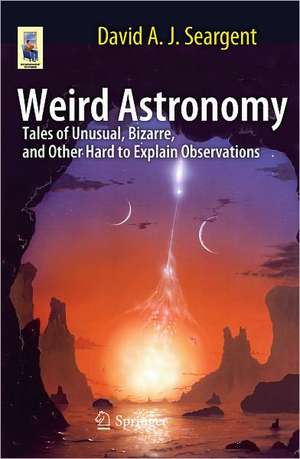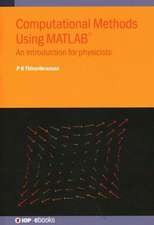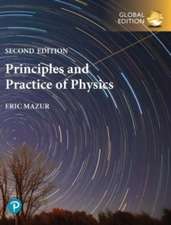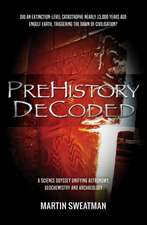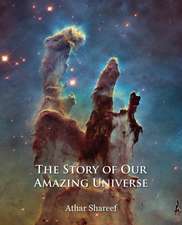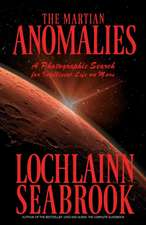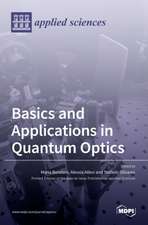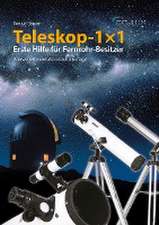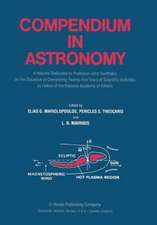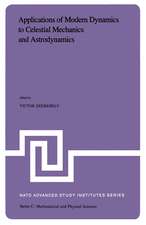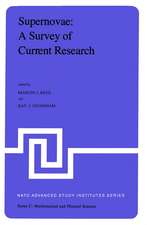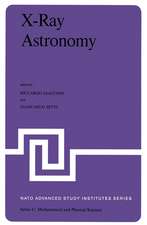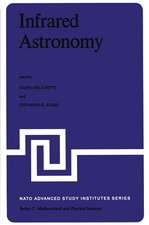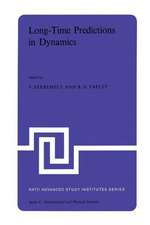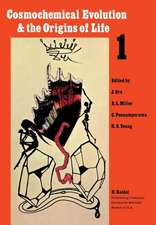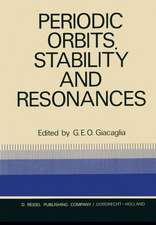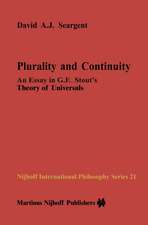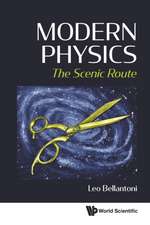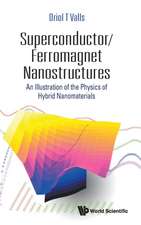Weird Astronomy: Tales of Unusual, Bizarre, and Other Hard to Explain Observations: Astronomers' Universe
Autor David A.J. Seargenten Limba Engleză Paperback – 27 sep 2010
Din seria Astronomers' Universe
-
 Preț: 210.44 lei
Preț: 210.44 lei -
 Preț: 207.15 lei
Preț: 207.15 lei -
 Preț: 195.53 lei
Preț: 195.53 lei -
 Preț: 284.56 lei
Preț: 284.56 lei -
 Preț: 212.88 lei
Preț: 212.88 lei -
 Preț: 256.41 lei
Preț: 256.41 lei -
 Preț: 264.35 lei
Preț: 264.35 lei -
 Preț: 259.08 lei
Preț: 259.08 lei -
 Preț: 227.61 lei
Preț: 227.61 lei -
 Preț: 277.98 lei
Preț: 277.98 lei -
 Preț: 305.70 lei
Preț: 305.70 lei -
 Preț: 253.11 lei
Preț: 253.11 lei -
 Preț: 216.60 lei
Preț: 216.60 lei -
 Preț: 272.24 lei
Preț: 272.24 lei -
 Preț: 330.75 lei
Preț: 330.75 lei -
 Preț: 179.00 lei
Preț: 179.00 lei -
 Preț: 289.83 lei
Preț: 289.83 lei -
 Preț: 160.03 lei
Preț: 160.03 lei -
 Preț: 200.80 lei
Preț: 200.80 lei -
 Preț: 255.97 lei
Preț: 255.97 lei -
 Preț: 242.58 lei
Preț: 242.58 lei -
 Preț: 262.55 lei
Preț: 262.55 lei -
 Preț: 282.38 lei
Preț: 282.38 lei -
 Preț: 187.82 lei
Preț: 187.82 lei -
 Preț: 225.19 lei
Preț: 225.19 lei -
 Preț: 207.64 lei
Preț: 207.64 lei -
 Preț: 104.35 lei
Preț: 104.35 lei -
 Preț: 188.94 lei
Preț: 188.94 lei -
 Preț: 270.50 lei
Preț: 270.50 lei -
 Preț: 212.01 lei
Preț: 212.01 lei -
 Preț: 169.08 lei
Preț: 169.08 lei -
 Preț: 210.01 lei
Preț: 210.01 lei -
 Preț: 208.26 lei
Preț: 208.26 lei -
 Preț: 253.98 lei
Preț: 253.98 lei -
 Preț: 180.12 lei
Preț: 180.12 lei -
 Preț: 280.19 lei
Preț: 280.19 lei -
 Preț: 273.13 lei
Preț: 273.13 lei -
 Preț: 207.39 lei
Preț: 207.39 lei -
 Preț: 208.70 lei
Preț: 208.70 lei -
 Preț: 214.86 lei
Preț: 214.86 lei -
 Preț: 188.94 lei
Preț: 188.94 lei -
 Preț: 194.65 lei
Preț: 194.65 lei -
 Preț: 277.34 lei
Preț: 277.34 lei -
 Preț: 187.15 lei
Preț: 187.15 lei -
 Preț: 210.93 lei
Preț: 210.93 lei -
 Preț: 212.01 lei
Preț: 212.01 lei
Preț: 254.90 lei
Nou
Puncte Express: 382
Preț estimativ în valută:
48.78€ • 52.97$ • 40.98£
48.78€ • 52.97$ • 40.98£
Carte disponibilă
Livrare economică 01-15 aprilie
Preluare comenzi: 021 569.72.76
Specificații
ISBN-13: 9781441964236
ISBN-10: 1441964231
Pagini: 150
Ilustrații: XIII, 304 p. 46 illus., 18 illus. in color.
Dimensiuni: 155 x 235 x 20 mm
Greutate: 0.45 kg
Ediția:2011
Editura: Springer
Colecția Springer
Seria Astronomers' Universe
Locul publicării:New York, NY, United States
ISBN-10: 1441964231
Pagini: 150
Ilustrații: XIII, 304 p. 46 illus., 18 illus. in color.
Dimensiuni: 155 x 235 x 20 mm
Greutate: 0.45 kg
Ediția:2011
Editura: Springer
Colecția Springer
Seria Astronomers' Universe
Locul publicării:New York, NY, United States
Public țintă
Popular/generalCuprins
Preface.- Our Weird Moon.- Odd and Interesting Happenings Near the Sun.- Planetary Weirdness.- Weird Meteors.- Strange and Star-like Objects.- Moving Mysteries and Wandering Stars.- Facts, Fallacies, Unusual Observations and Other Miscellaneous Gleanings.- Appendix 1: The Danjon Scale of Lunar Eclipse Brightness.- Appendix 2: Lunar Eclipses 2011 - 2050.- Appendix III: Solar Eclipses 2011 - 2030.- Appendix IV: Transits of Mercury 2016 - 2100.- Index
Recenzii
From the reviews:
“It’s one of the most evocative, incisive and fascinating books I’ve read on astronomy. … Seargent’s clear, intelligent and insightful prose considers and summarises all sides of any debate. … Essentially, he supplies you with the information, then allows you to decide. … Seargent also offers UFO researchers a feast for thought. … Seargent suggests that astronomers might find ‘very interesting phenomena … . The book is a masterclass in popular science writing … .” (Mark Greener, Fortean Times, April, 2011)
“Thank you Goodreads First Reads for this free book. This is a great book. Full of interesting and unusual events. A must read for any astronomy hobbyists.” (Landy, Goodreads, June, 2011)
“WOW!!! this book was really amazing!!! i mean im not that into space as many people but this book was really interesting and it got me to think. … I had no idea of how many theories regarding space there were!!! i was amazed by how many pictures and data that has come from space that id never even knew existed!!!” (Magdalena, Goodreads, June, 2011)
“This is a much lighter, much more entertaining read … . One of the best things about the book is that it is littered with lots of suggestions for experiments and observations the reader can do themselves, to gain a better understanding of how the night sky works … . All in all a very enjoyable read, written in a friendly, informal style. Definitely a book to have within easy reach for those nights when the clouds refuse to part.” (Cumbrian Sky, May, 2011)
“Any book which looks at the lighter side of astronomy is always welcome and this is both entertaining and engaging.” (Spaceflight, Vol. 54 (1), January, 2012)
“It’s one of the most evocative, incisive and fascinating books I’ve read on astronomy. … Seargent’s clear, intelligent and insightful prose considers and summarises all sides of any debate. … Essentially, he supplies you with the information, then allows you to decide. … Seargent also offers UFO researchers a feast for thought. … Seargent suggests that astronomers might find ‘very interesting phenomena … . The book is a masterclass in popular science writing … .” (Mark Greener, Fortean Times, April, 2011)
“Thank you Goodreads First Reads for this free book. This is a great book. Full of interesting and unusual events. A must read for any astronomy hobbyists.” (Landy, Goodreads, June, 2011)
“WOW!!! this book was really amazing!!! i mean im not that into space as many people but this book was really interesting and it got me to think. … I had no idea of how many theories regarding space there were!!! i was amazed by how many pictures and data that has come from space that id never even knew existed!!!” (Magdalena, Goodreads, June, 2011)
“This is a much lighter, much more entertaining read … . One of the best things about the book is that it is littered with lots of suggestions for experiments and observations the reader can do themselves, to gain a better understanding of how the night sky works … . All in all a very enjoyable read, written in a friendly, informal style. Definitely a book to have within easy reach for those nights when the clouds refuse to part.” (Cumbrian Sky, May, 2011)
“Any book which looks at the lighter side of astronomy is always welcome and this is both entertaining and engaging.” (Spaceflight, Vol. 54 (1), January, 2012)
Notă biografică
David A.J. Seargent holds an MA and PhD, both in Philosophy, from the University of Newcastle NSW, where he formerly worked as a tutor in Philosophy for the Department of Community Programmes/Workers’ Educational Association external education programme. He is also a keen amateur astronomer, and is known for his observations of comets, one of which he discovered in 1978. Together with his wife Meg, David lives at The Entrance, north of Sydney on the Central Coast of New South Wales, Australia. He is the author of two astronomy books: Comets: Vagabonds of Space (Doubleday, 1982), and The Greatest Comets in History: Broom Stars & Celestial Scimitars (Springer, 2008). Currently he is the author of a regular column in Australian Sky & Telescope magazine.
Textul de pe ultima copertă
You go out for a night’s observing and look up at the sky. There are all the usual suspects—a splattering of stars, the Moon, Venus, maybe Mercury and Mars. Perhaps you can identify some of the constellations. If you are using binoculars or a small telescope, you can see many wonders not revealed to the naked eye but still well known to telescope users for centuries.But what if you look up and see something completely new, something unexplainable. Do your eyes deceive you? Are you really seeing what you think you are seeing? What should you do?In this fascinating account of the many oddball things people – from novice astronomers to certified experts – have observed over the years, you will be introduced to a number of unusual – and sometimes still unexplainable – phenomena occurring in our usually familiar and reassuring skies. What exactly did they see? What discoveries followed these unusual sightings? What remains unexplained?In addition to the accounts, you will find scattered throughout the book a number of suggested astronomy projects that you can do yourself. The projects range from very basic to a bit more challenging, but all are fun and all are very instructive about unusual sightings. Be sure to try them!
Caracteristici
Includes many fascinating and amusing astronomical observations throughout the ages not found in usual popular astronomy books Handles the subject in a non-technical way, making it accessible to everyone Looks at unusual and sometimes extraordinary scientific events and ideas without promoting gullibility nor excessive scepticism Includes supplementary material: sn.pub/extras
